Stunning stellar nursery: A close-up look at the star-forming region of the Carina Nebula
posted Monday, July 18, 2022 at 10:30 AM EDT
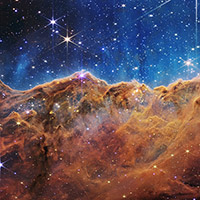
Today, we finish our deep-dive series on the James Webb Space Telescope's first images. To recap, we've looked at Webb's First Deep Field, a stunning look at a dying star, and a fascinating, interacting galactic quintet. The final image is a stellar nursery in the Carina Nebula. For what it's worth, I think we've saved the best for last. Webb's advanced technology and improved performance reveal emerging stellar nurseries and individual stars in the region that were previously obscured. The "Cosmic Cliffs" images showcase Webb's ability to "peer through cosmic dust," providing researchers with new and improved information and data to understand how stars form.
Objects in the earliest stages of star formation are notoriously hard to capture – a typical star forms in around 10 to 50 million years. However, the earliest stages of star formation last only 50,000 to 100,000 years, a practical blink for the universe. NASA writes, "Webb's extreme sensitivity, spatial resolution, and imaging capability can chronicle these elusive events."
The image below shows the star-forming region called NGC 3324 in the Carina Nebula. The observed region is about 7,600 light-years from Earth. The region, captured by Webb using infrared light, shows what looks like "craggy mountains," but it's actually the edge of a gaseous cavity. The "peaks" in the image are massive – about seven light-years high. "The cavernous area has been carved from the nebula by the intense ultraviolet radiation and stellar winds from extremely massive, hot, young stars located in the center of the bubble, above the area shown in this image."
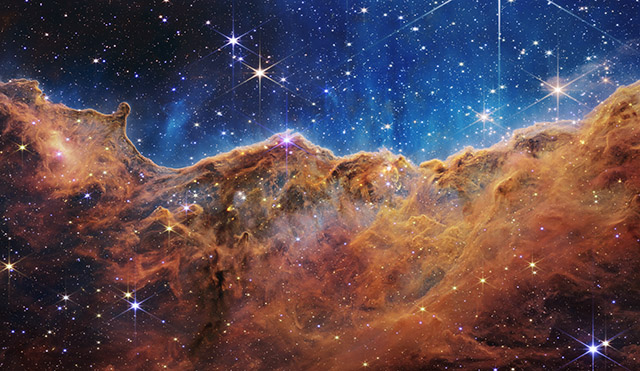
Credits: NASA, ESA, CSA, and STScI. Click here for the full-resolution image.
In the above image, pay special attention to the "steam" that rises from the "mountains." This hot, ionized gas streams away from the nebula due to extremely intense ultraviolet radiation. The pillars that rise above the glowing gas are "resisting the blistering ultraviolet radiation from the young stars." The bubbles and cavities you see are due to radiation and stellar winds from newborn stars. The gold protostellar jets and outflows are emitted from dust-enshrouded nascent stars. The "blow-out" at the top-center of the ridge is emitting gas and dust into the interstellar medium.
NGC 3324 was first cataloged by James Dunlop in 1826. You can view it from the Southern Hemisphere. NGC 3324 is located at the northwest corner of the Carina Nebula (NGC 3372) in the constellation Carina. The Carina Nebula is also the home of the Keyhole Nebula and an active, unstable supergiant star, Eta Carinae.
Given how long we've known about NGC 3324, it's probably no surprise that Hubble has observed it. Hubble has observed it on numerous occasions, one of which produced one of Hubble's most memorable images.
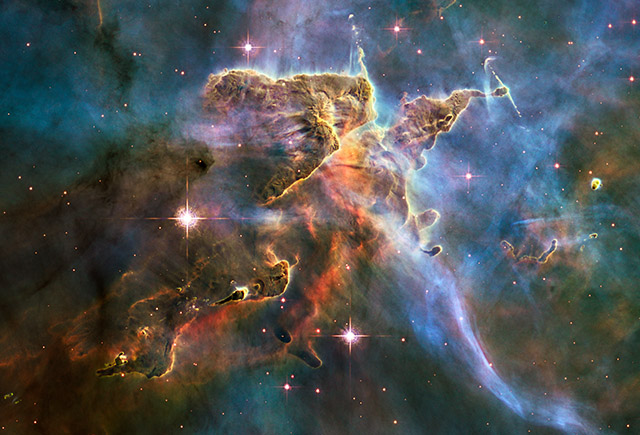
Credits: NASA, ESA, Mario Livio (STScI), Hubble 20th Anniversary Team (STScI). Click here for the full-resolution image.
While that image is incredible, Hubble has also captured an image much more like that of the James Webb Space Telescope. That image was published in 2008 to celebrate the 10th anniversary of the Hubble Space Telescope's Hubble Heritage Project.
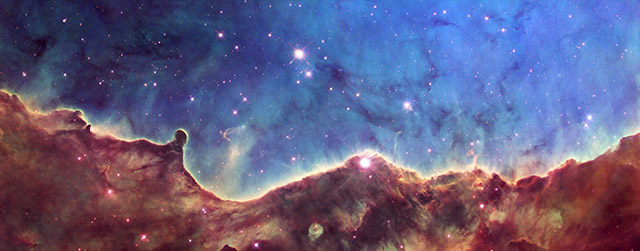
Credits: NASA, ESA, and The Hubble Heritage Team (STScI/AURA); Acknowledgment: N. Smith (University of California, Berkeley). Click here to view the full-resolution image.
As you can see, the difference between Webb's new image and Hubble's original image is stark. The new image shows many more stars and significantly better detail and resolution of the cosmic dust, which holds critical information about star formation.
Webb also captured the Carina Nebula using NIRCam and MIRI together to create a composite image. The combined instruments unveil previously invisible areas of star birth behind cosmic dust and gas.
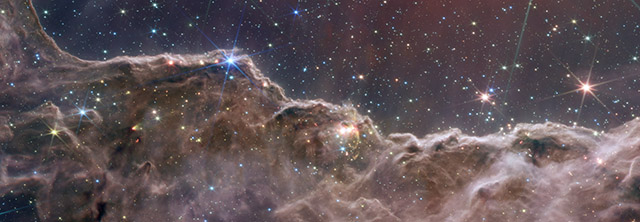
Credits: NASA, ESA, CSA, and STScI. Click here to view the full-resolution image.
Before wrapping up this closer look at the Carina Nebula as seen by the James Webb Space Telescope, let's look at the primary NIRCam image with compass areas, scale bar, and a color key. The Webb team writes, "The north and east compass arrows show the orientation of the image on the sky. Note that the relationship between north and east on the sky (as seen from below) is flipped relative to direction arrows on a map of the ground (as seen from above). The scale bar is labeled in light-years, which is the distance that light travels in one Earth-year. (It takes two years for light to travel a distance equal to the length of the scale bar.) One light-year is equal to about 5.88 trillion miles or 9.46 trillion kilometers. The field of view shown in this image is approximately 16 light-years across. This image shows invisible near-infrared wavelengths of light that have been translated into visible-light colors. The color key shows which NIRCam filters were used when collecting the light. The color of each filter name is the visible light color used to represent the infrared light that passes through that filter."
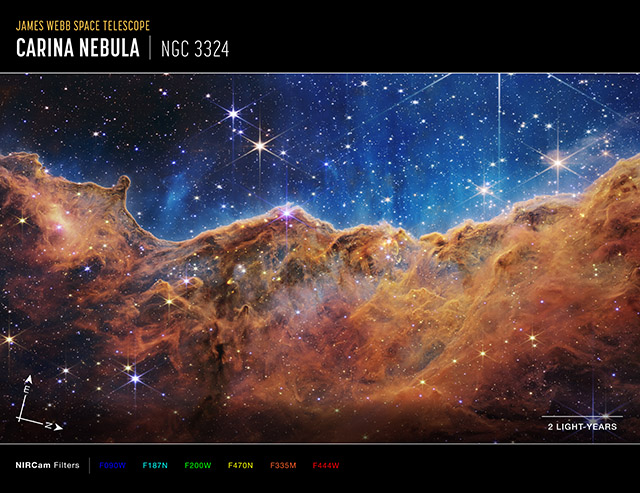
Credits: NASA, ESA, CSA, and STScI. Click here for the full-resolution image.
You can also see the NIRCam and MIRI composite image with similar annotations
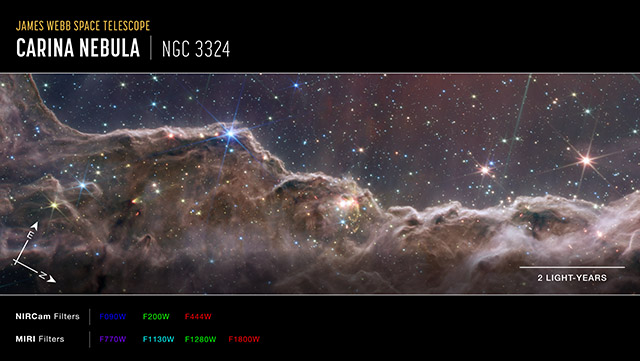
Credits: NASA, ESA, CSA, and STScI. Click here to view the full-resolution image.
Stay tuned to see what's next from the James Webb Space Telescope. We expect to see something new on a near-weekly basis. We can't wait to see what the Webb team has in store. To see all of Webb's first images, click here. If you'd like to see a neat video recapping the new Webb Space Telescope images against their Hubble counterparts, check out the video below.